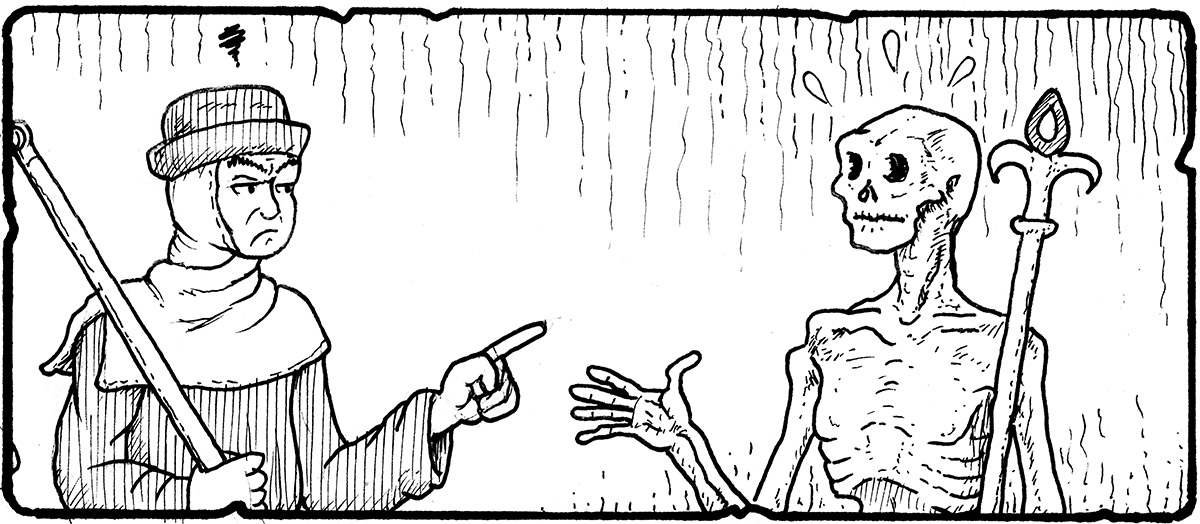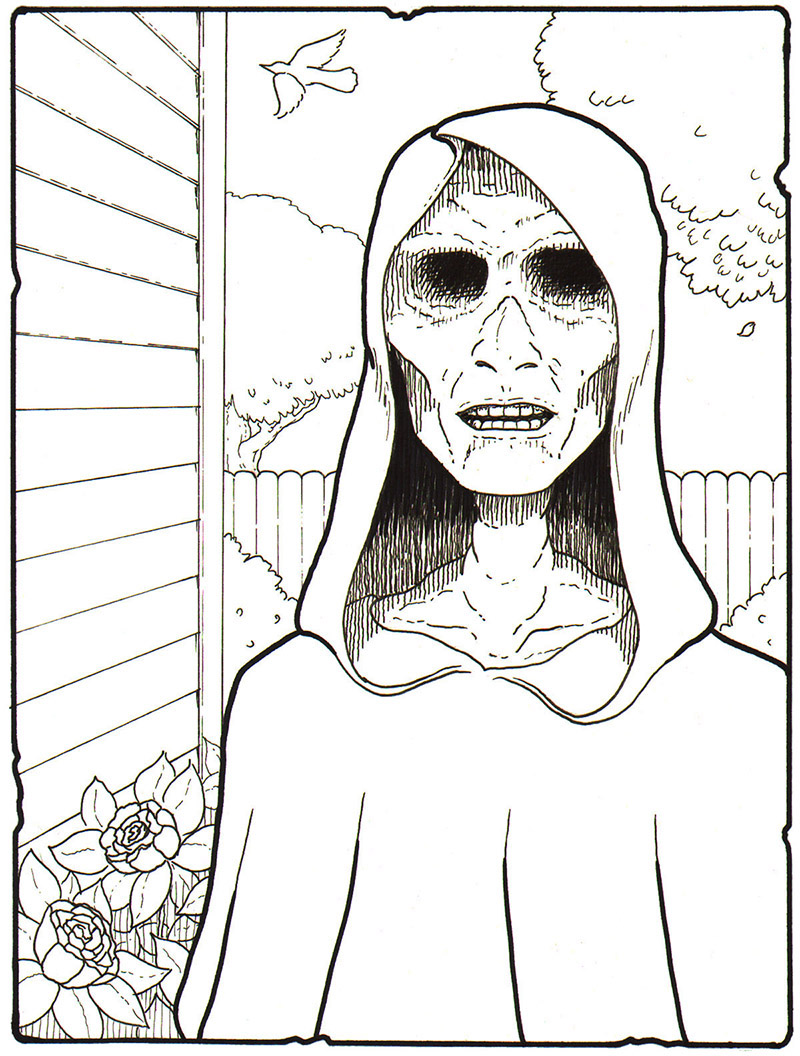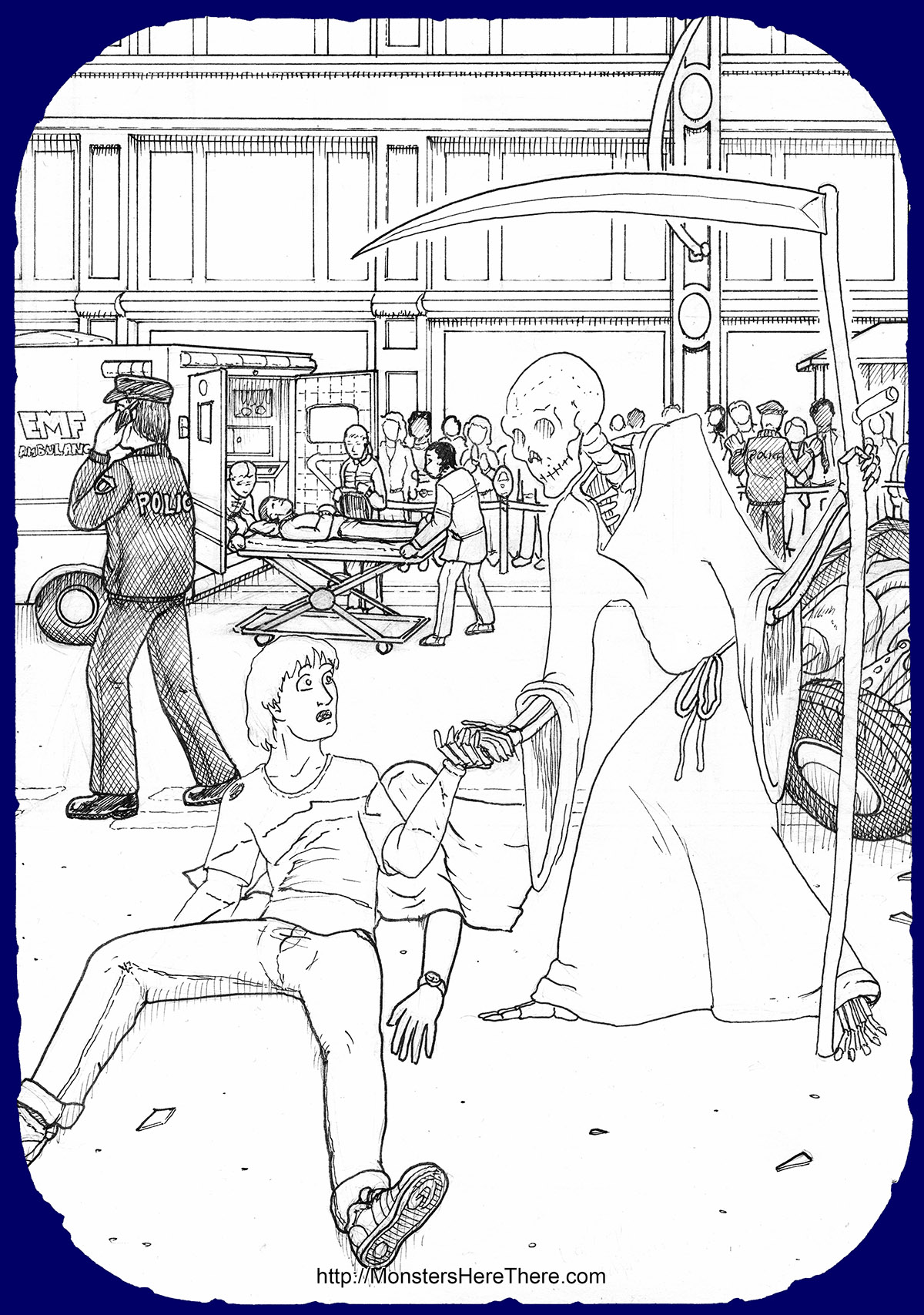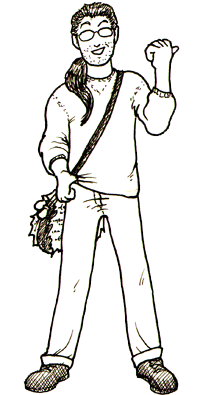Area(s) Reported: Europe and the United States
Date(s) Reported: since at least 1401 CE... likely much earlier
All humans, no matter where they were born or what they believe, are subject to death at some point in their lives... so it should not be too much of a surprise to find that death is personified -- represented as a singular, intelligent being -- in most cultures around the world. By creating such a personification, the concept of death itself can then be used in both fictional tales to explore ideas regarding it and in folklore beliefs to prescribe ways to address and deal with death when it strikes. For at least six hundred years, this traditional representation of death in Europe and the United States has been known as the “Grim Reaper” or just “Death” (with a capital “D”), and is most often portrayed as a skeleton carrying a scythe, and usually wearing a black cloak. That death should be represented as either a skeleton or skeletally thin person is a common theme to many cultures; this appearance evokes both the last mortal remains of humans, as well as what many people actually look like before dying. A scythe is an old farm tool used to mow down large patches of tall stalks from the base with each sweep... so the implication is the Grim Reaper could easily cut off the lives of many people at one stroke. The cloak appears to be a 18th or 19th Century addition to the Grim Reaper's appearance, as most older illustrations and statues do not include this garment. Accounts of the Grim Reaper sometimes portray him (this being is most often portrayed in male terms) as a "psychopomp," which means a guide of the newly dead whose job is to collect and safely transport the spirits of the once-living to their designated afterlife... but there are also stories that portray the Grim Reaper as the actual cause of death, charged with ending the lives of those he collects. Many of these stories tell of people attempting to trick or stall the Grim Reaper to prolong their mortal lives; some succeed, but most don’t. The Ploughman and Death The earliest such fictional account of a meeting with the Grim Reaper that I've found is a 1401 German poem by Johannes von Tepl called Der Ackermann aus Böhmen ("The Ploughman from Bohemia"), in which a dialogue takes place between a ploughman, whose wife has recently died, and a skeletal Death who refers to himself as “Master Death, a truly effective reaper.” 
Accused of being the basest of evil things by the upset ploughman, Death defends himself by pointing out that all things must end; it is merely his job to bring that end. Without an end to living things, the world would quickly become crowded to the point of no movement; and all would be hungry for lack of things to eat, for none could kill to acquire food. In short, death is not only inevitable, but required. These early representations of death largely favored artists, allowing an allegorical way to represent the threat of the final sleep. The Grim Reaper, in the form of a skeleton carrying a scythe, appears in sculptures, paintings, and illustrations since at least 1450 CE, when this was how death was presented on a deck of hand-drawn Tarot cards... and it's likely that this idea/image was around much earlier as well. The concept of the Grim Reaper as the actual executor of death lives on in stories and movies to this day wherein heroes and heroines avoid their own demise by shying away from a glaringly obvious skeleton in black carrying a scythe. But don’t make the mistake of believing the Grim Reaper is simply a symbolic tool used by writers and artists to represent death... oddly, there are in fact reports of a similar figure actually being seen by people! The Grim Reaper Appears In 1924, Bliss Coleman and her husband were living in a rented a room in a house in Oakland, California, USA, which they shared with other renters. Coleman was in the habit of coming back to her room each day when she had a 4:00pm break at work. One day as she entered the house, she saw a woman who was a third floor tenant talking to the landlady in the hall... and she also saw a six-foot tall skeleton which was standing near that tenant and had a bony arm wrapped around the tenant's waist. Neither the tenant nor the landlady showed signs of being aware of the skeleton's presence; and Coleman, terrified, rushed past them to her room down the hall. She was so unsettled by the vision that she soon left the building by a rear door. Three weeks later the third floor tenant died, leaving her children motherless. In 1974, Dr. Julian Kirchick was startled by a noise in some bushes about twenty feet away from where he was relaxing in his backyard at home. Upon getting up to go investigate, he encountered a disturbing vision of a cloaked figure. 
He described it as having “tissue-like skin” that was drawn tightly over a skeletal frame, empty eye sockets, and an almost friendly toothy grin. The figure beckoned Kirchick to come closer, but Kirchick was frozen with fear. The vision eventually vanished. Shortly thereafter Kirchick was diagnosed with a terminal illness that took his life four years later. Note that these reported sightings are not attacks by ominous reapers; instead, they appear to be more a quiet, yet disturbing, notification of coming doom. So, if people see a skeletal figure that is only afterwards associated with the death of a person, it begs the question: Was the iconic idea of the Grim Reaper created because people were actually seeing these skeletal precursors, or do people now see these visions because they believe they should? In short, did the Grim Reaper start as fact or fiction? Because it's being factually reported now! | 









